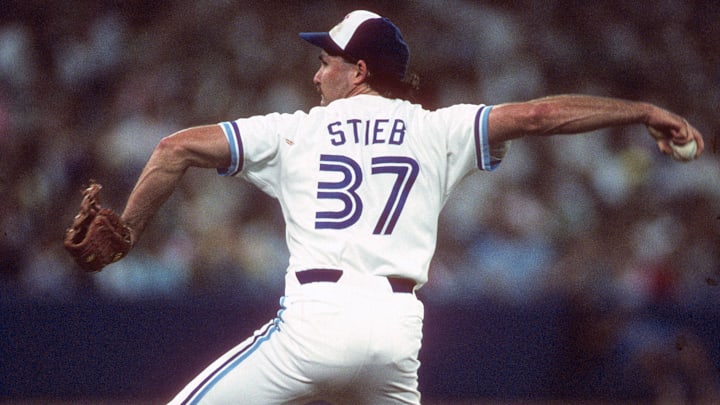#33 Ed Sprague
Ed Sprague came up during the 1991 season but didn’t receive a lot of playing time on a roster that was tough to crack. Despite only getting into a total of 83 games over his first two seasons, Sprague was on the Blue Jays World Series roster, in what proved to be a prescient move by Manager Cito Gaston.
Down 4-3 in the ninth inning of Game 2, the skipper went to his bench, and following a walk by Derek Bell, Sprague went deep off of Braves closer Jeff Reardon for the go-ahead hit in a 5-4 win. It was Sprague’s only hit of the series, and, by far, the biggest of his career.
He was a big part of the 1993 team that went back-to-back as he settled into his role as the starting third baseman. Sprague enjoyed his best season in 1996 when he hit .247 with 36 homers, 101 RBI, a .821 OPS, and a 3.1 WAR.
#34 A.J. Burnett
This number has been worn by some well-known Jays pitchers including Mark Eichhorn (during the 1992 season), Dave Stewart, and currently Kevin Gausman. While the latter may eventually hold the top spot here, for now, it goes to the fiery A.J. Burnett.
Signed as a free agent prior to the 2006 season, Burnett would be an anchor on the staff for the next three seasons. His best year came in his last in blue, 2008, when Burnett went 18-10 with a 4.07 ERA while making 34 starts, pitching 221.1 innings, and leading the league with 231 strikeouts.
#35 Lyle Overbay
Several big names have worn this number including Phil Niekro, Bud Black, Sandy Martinez, and Frank Thomas, but the number one #35 goes to Lyle Overbay who had a solid five-year run with the team from 2006-2010.
The Jays loaded up for the 2006 season, signing Burnett, Overbay, B.J. Ryan, and Troy Glaus to free-agent contracts to put pressure on the Yankees and Red Sox in AL East. The result wasn’t quite a division title, but the 2006 team fared reasonably well, going 87-75 with Overbay being a big reason why.
The first baseman hit .312 with 46 doubles, 81 RBI, and a career-best 92 RBI. Overbay would hit .268 with 83 home runs, with a .796 OPS for some Jays teams that were good, but not quite good enough.
